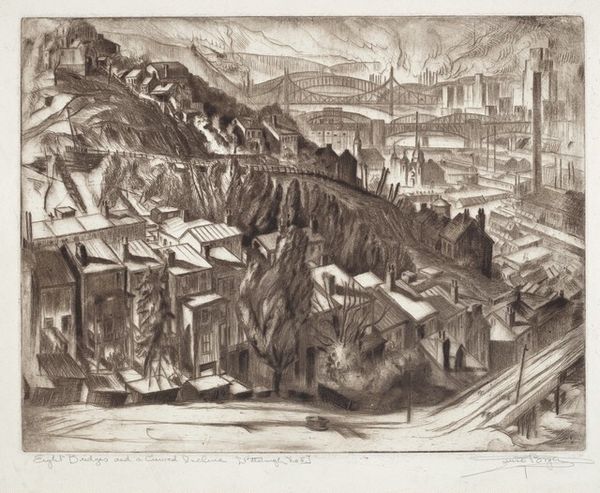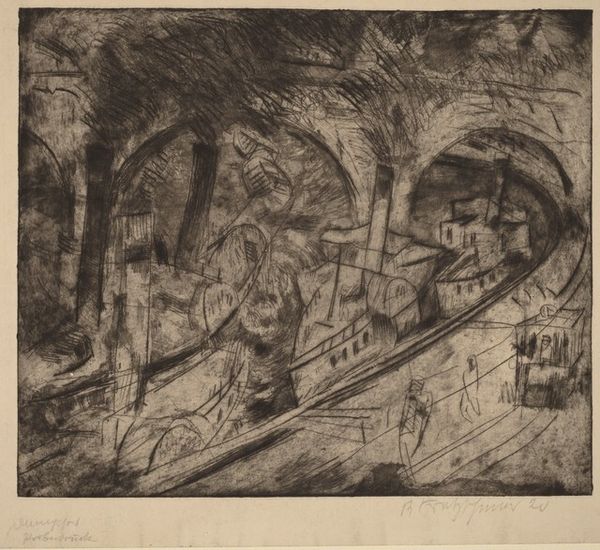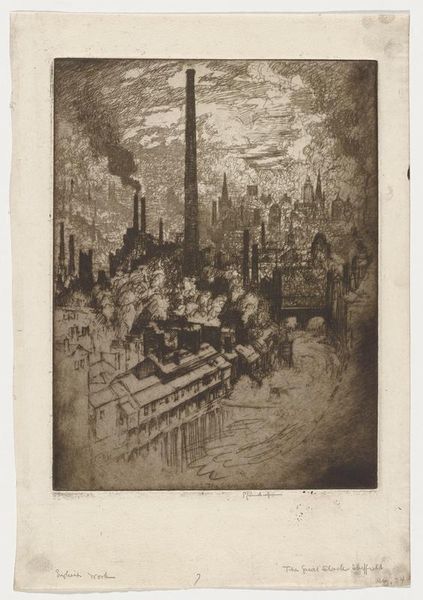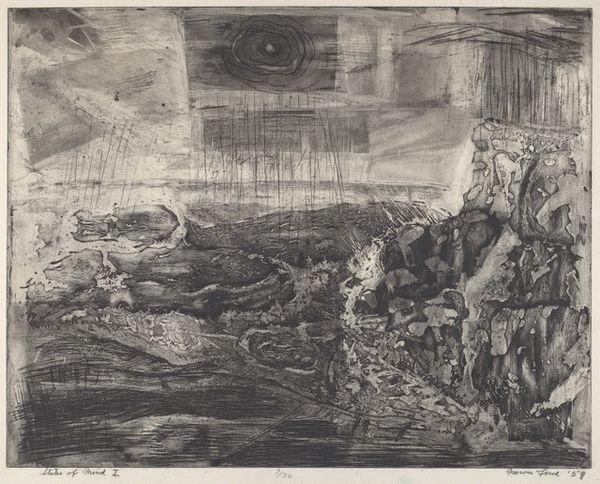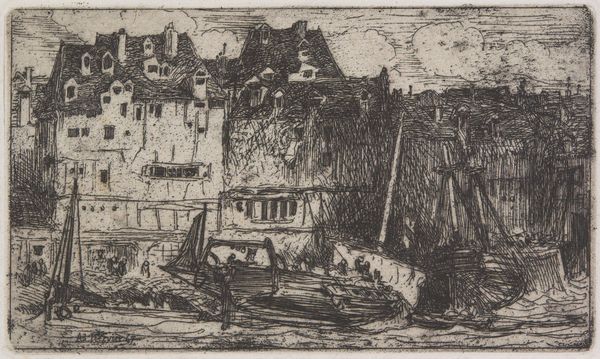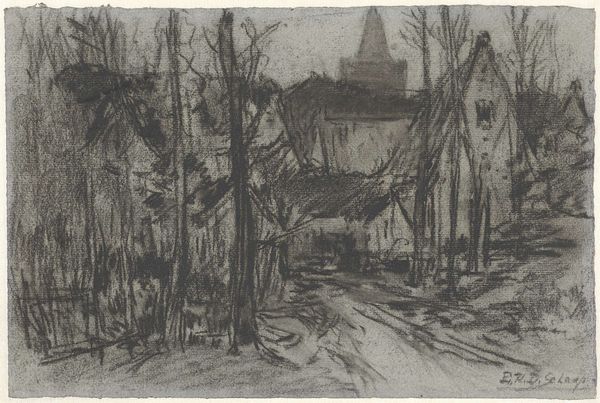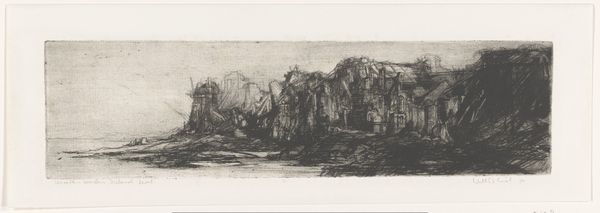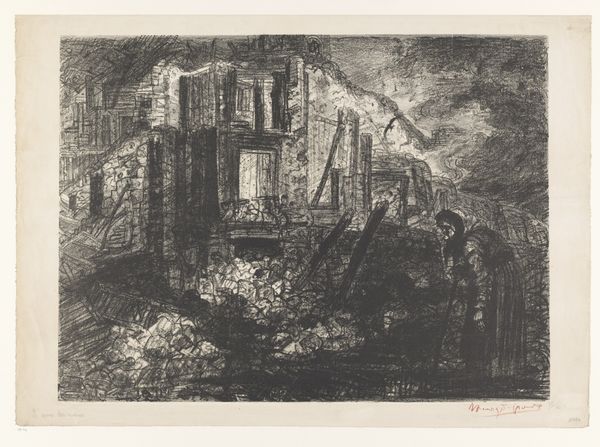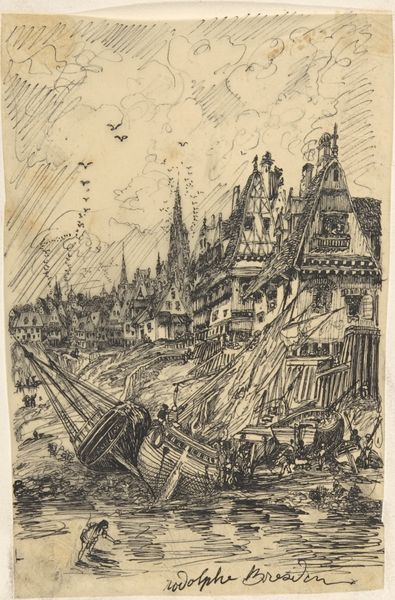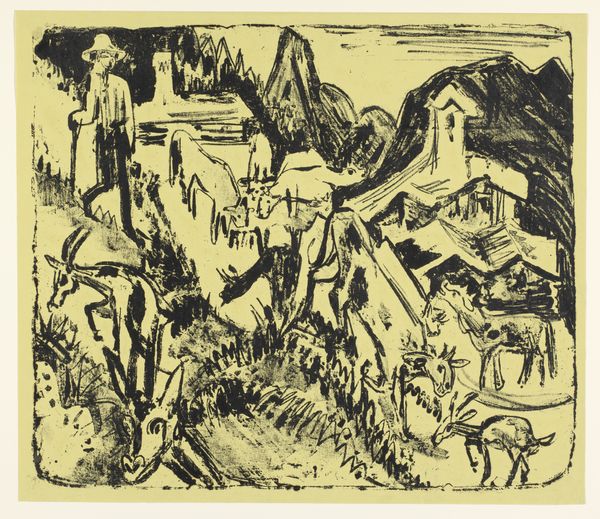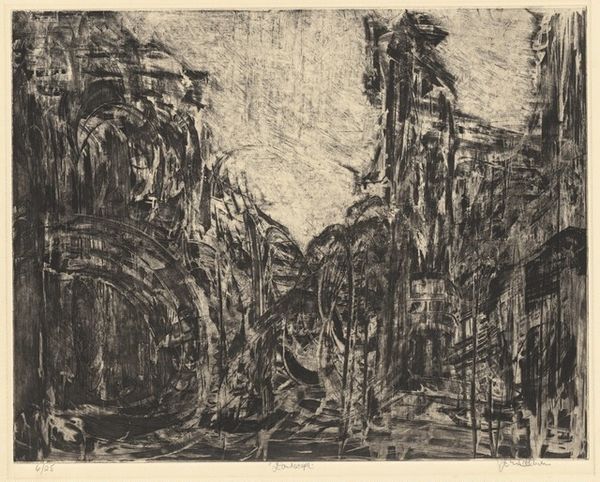
print, etching
# print
#
etching
#
landscape
#
genre-painting
#
realism
Copyright: National Gallery of Art: CC0 1.0
Editor: This etching by Frederick Monhoff, titled *Oil Workers*, appears to be from the 1920s. It's quite striking, almost dystopian with all the oil derricks. What's your take on it? Curator: The repetitive use of line, created through the etching process, echoes the repetitive labor shown in the print. Notice how the crude construction of the oil derricks contrasts with the fine lines that define them, subtly questioning the romantic notion of industrial progress. Editor: So you're saying the technique itself comments on the subject? Curator: Precisely. The materiality of the print – the ink, the paper, the marks of the etching needle – it all speaks to the larger system of production. These workers and the environment around them are simply materials to be exploited, mirroring the creation of the art itself. What impact do you think the labor of creating the print has on the overall feel of the work? Editor: I hadn't thought of it that way. Now I see the connection between the physical labor of the oil workers and the labor of creating the image. There’s a sense of grit in both. Curator: And where does that grit come from? Think about the process – the artist's hand, the acid biting into the metal plate, the physical act of printing. It all leaves a trace. It gives us insight into how art is not just a visual product, but also a record of the processes, the context, and the often-unseen labor that goes into its making. Editor: So, by looking closely at the materials and process, we can understand more about the art and the world it represents. Thank you for making me think about it that way. Curator: Indeed. Every mark tells a story, a story of material transformation and human intervention. It's all there if you look closely.
Comments
No comments
Be the first to comment and join the conversation on the ultimate creative platform.
